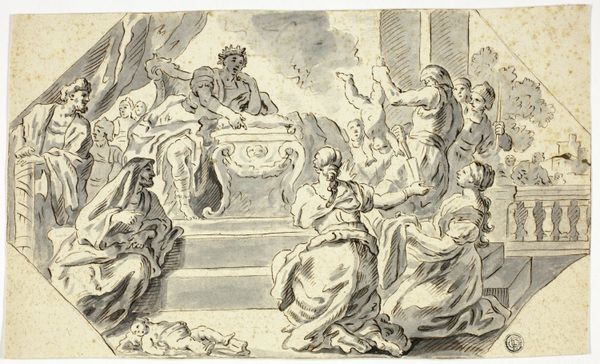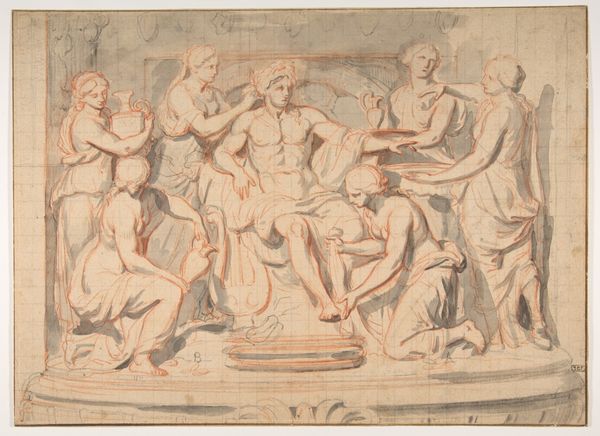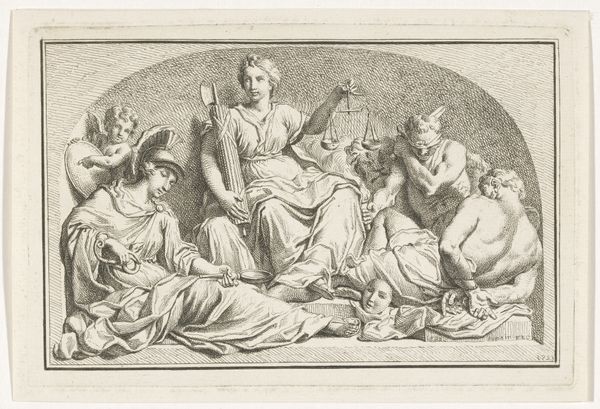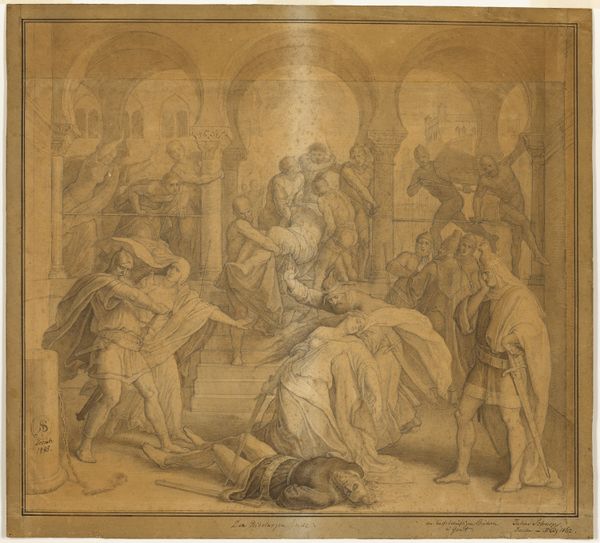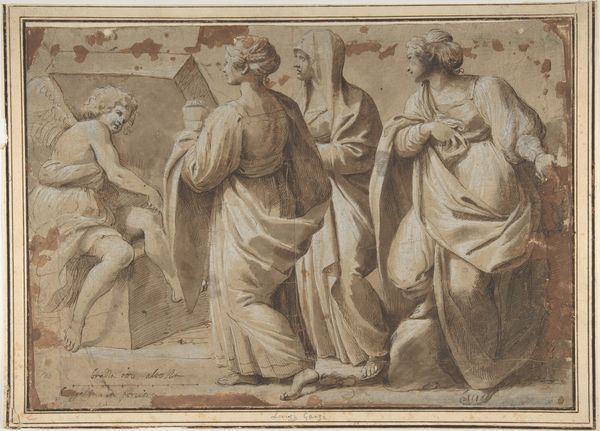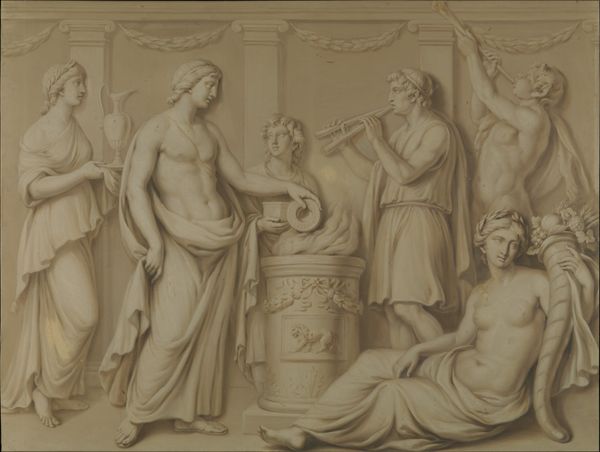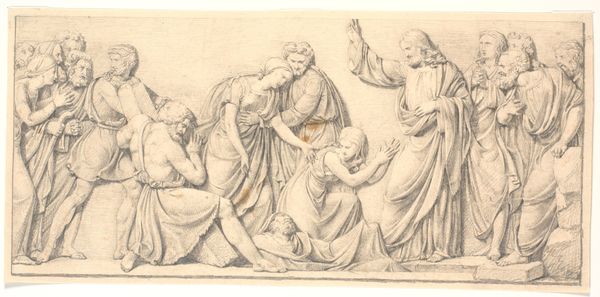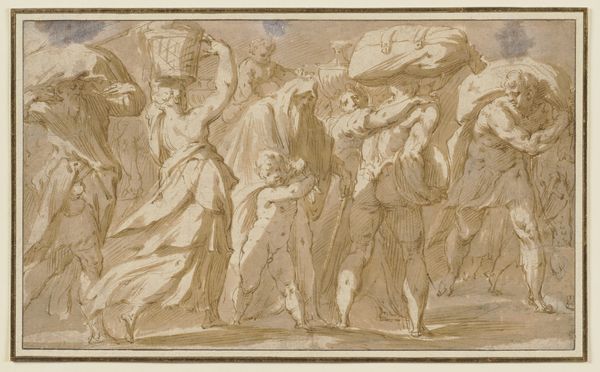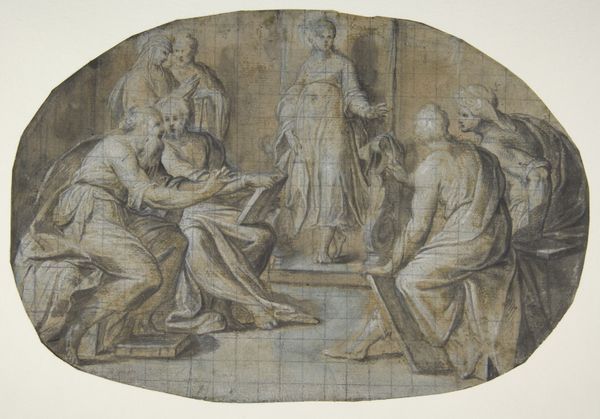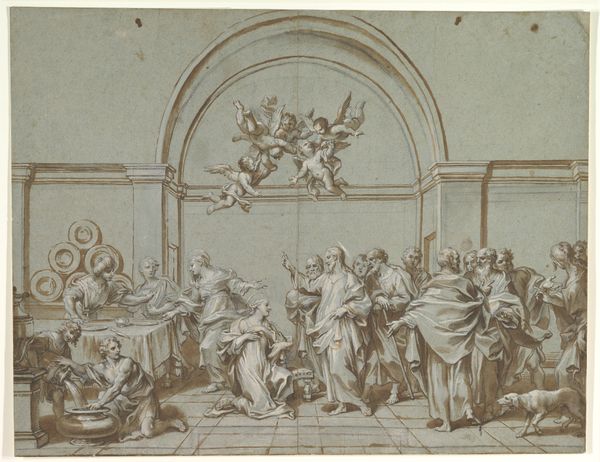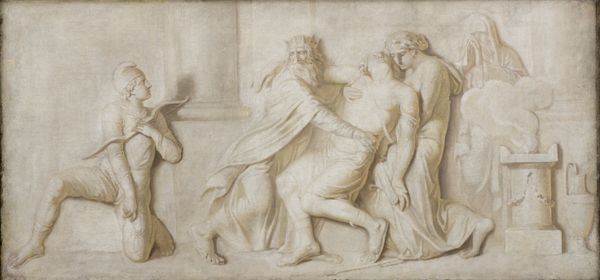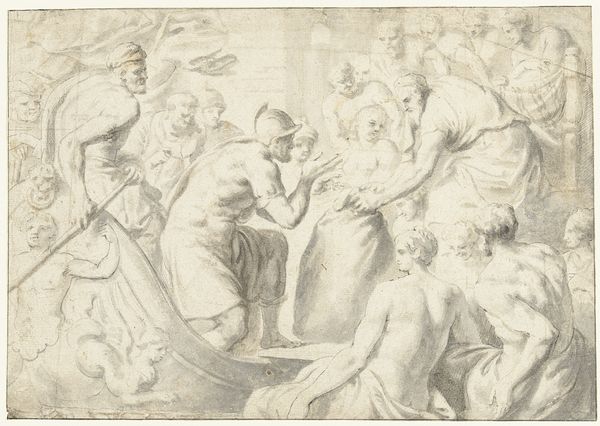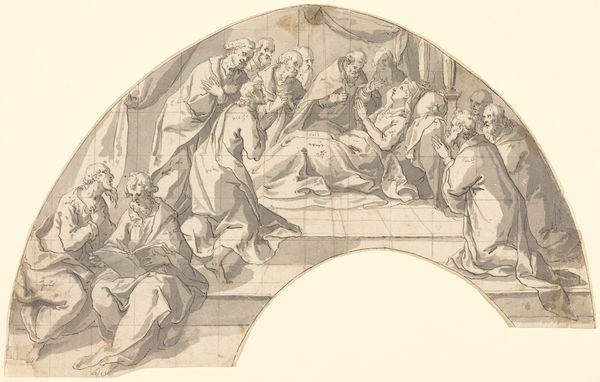
drawing, print
#
drawing
#
toned paper
# print
#
sculpture
#
charcoal drawing
#
charcoal art
#
unrealistic statue
#
coffee painting
#
framed image
#
men
#
portrait drawing
#
watercolour illustration
#
watercolor
Dimensions: 9 13/16 x 19 7/16 in. (25.0 x 49.3 cm) (semi-circular)
Copyright: Public Domain
Editor: Here we have Jan de Bisschop’s "The Three Virtues (after Raphael)", dating from 1660 to 1670, currently held at the Metropolitan Museum of Art. It seems to be some kind of monochromatic drawing or print on toned paper. The scene is set within an arch, featuring allegorical figures and putti. What strikes me is how the artist has captured the sculptural quality of Raphael's original work. How do you see this piece functioning formally, devoid of its historical and cultural contexts? Curator: The beauty lies precisely in Bisschop’s translation of Raphael's forms into a study of line, light, and shadow. Notice how the composition, although seemingly balanced, relies on a dynamic interplay of curving lines. Each figure’s pose contributes to a visual rhythm that sweeps across the surface. The limited tonal range forces us to focus on the structure. Where do you think the artist prioritized line versus form? Editor: That’s interesting. I would argue he favored line in the drapery and contours of the figures to create clear, readable silhouettes against the toned ground. But form dominates when modelling the musculature. Would you say that this formal tension is successful? Curator: Indeed. It introduces a complexity. We must ask ourselves, does the choice of a monochrome palette enhance or detract from the virtues being represented? One could argue it strips away distracting embellishments, guiding us toward pure, unadulterated form and intention. Are we, then, left with an essence, a distilled representation of virtue? Editor: Perhaps! It really makes you think about how much we rely on colour and other visual cues to understand art. Curator: Precisely. Bisschop compels us to deconstruct our conventional viewing habits and to examine the inherent structures and rhythms that underpin all visual experience. Editor: It’s like a formal reduction, really revealing the inner workings of both Bisschop’s and Raphael’s artistry. Thanks, this has been insightful.
Comments
No comments
Be the first to comment and join the conversation on the ultimate creative platform.
